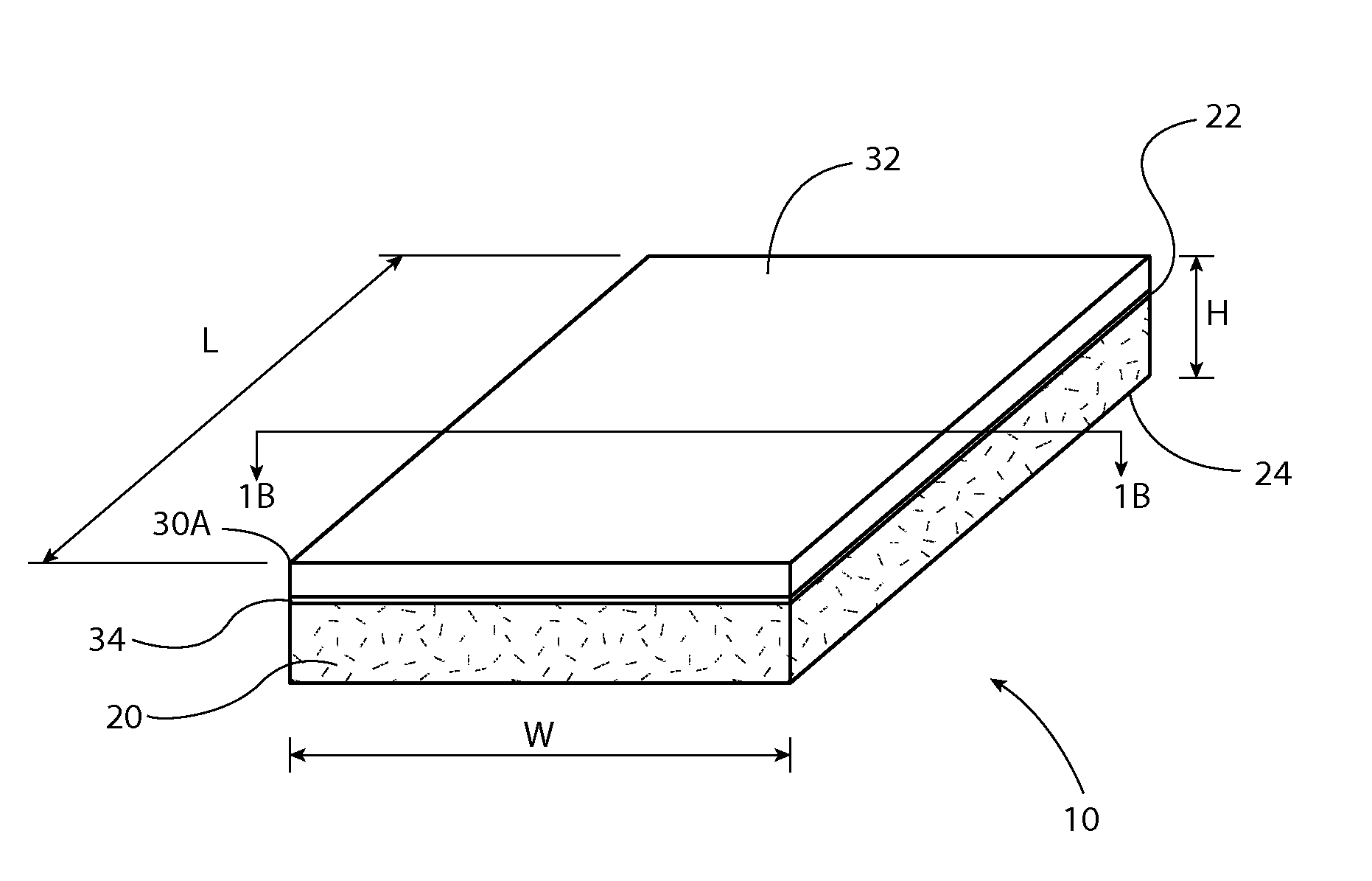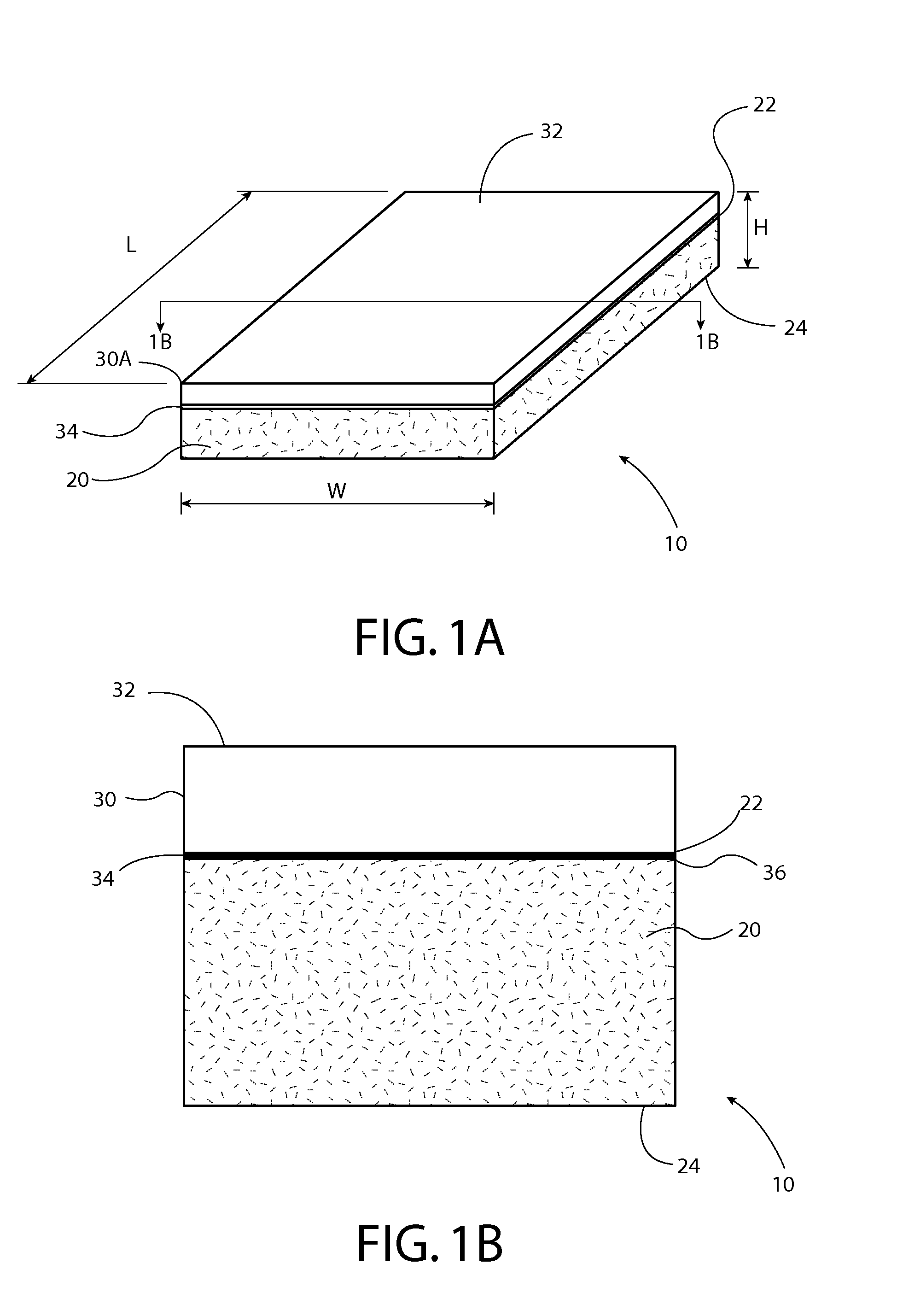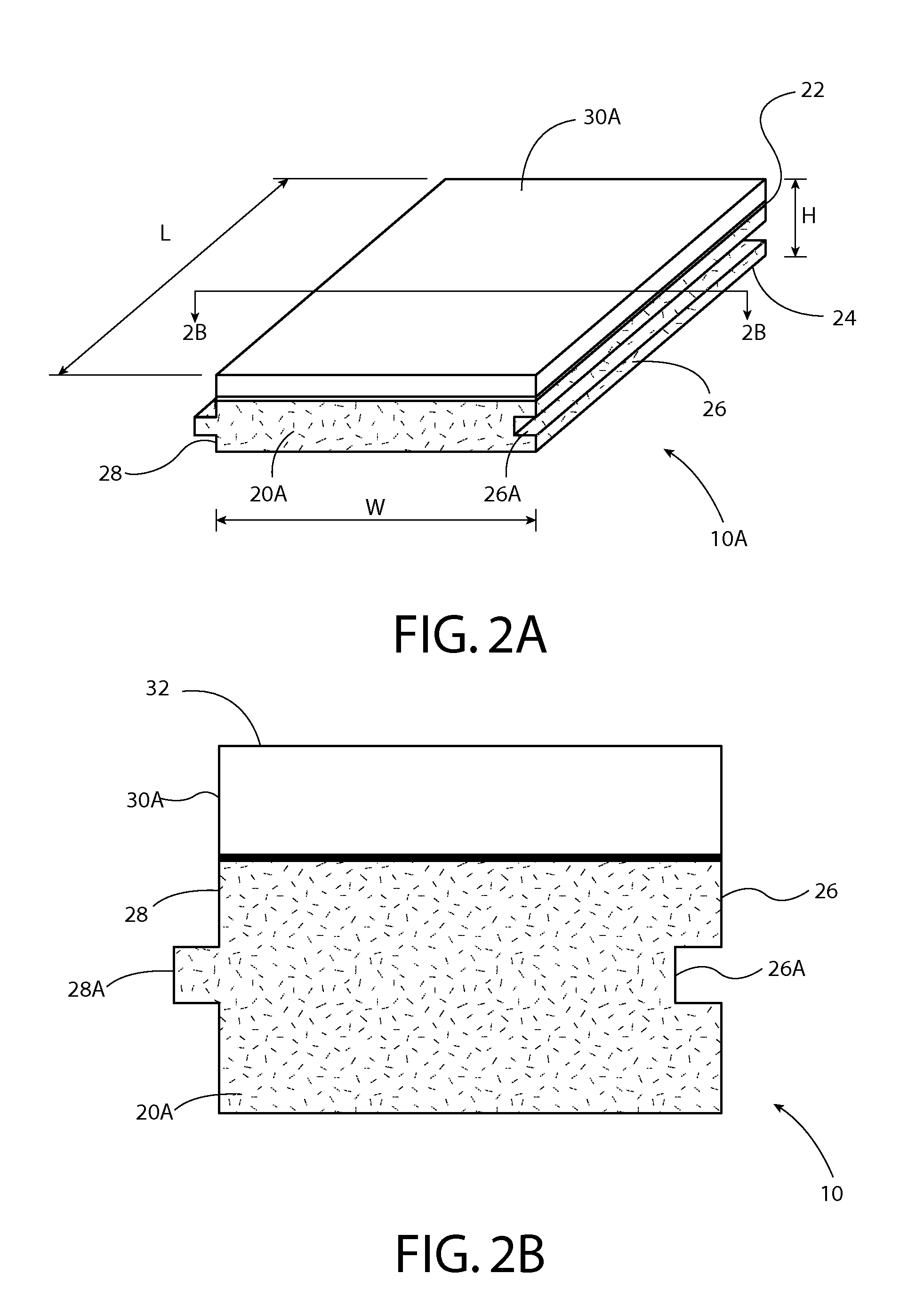Composite board
- Summary
- Abstract
- Description
- Claims
- Application Information
AI Technical Summary
Benefits of technology
Problems solved by technology
Method used
Image
Examples
Embodiment Construction
[0041]Referring now to FIGS. 1A and 1B, there is shown an improved composite board 10 in accordance with the preferred embodiment of the present invention. The board 10 includes a length L, width W and height H, which may be varied to suit particular needs.
[0042]The board 10 may be used in a variety of ways during the fabrication of a house or other type of structure. Without limitation, the boards 10 are used for constructing floors, walls, roofing, siding, and ceilings. By varying the height H of the boards, the constructed walls may be load bearing or non-load bearing.
[0043]The composite board 10 has a base panel layer 20 having a first side 22 and a second side 24 opposite the first side. The base panel layer 20 is made from a composition comprising one or more of the following ingredients, magnesium oxide (MgO), recycled magnesium oxide, fibrous chips, wood chips, bamboo chips, water, and chemical additive.
[0044]The composite board 10 includes a cover layer 30 having a top surf...
PUM
| Property | Measurement | Unit |
|---|---|---|
| Fraction | aaaaa | aaaaa |
| Fraction | aaaaa | aaaaa |
| Fraction | aaaaa | aaaaa |
Abstract
Description
Claims
Application Information
 Login to View More
Login to View More - R&D
- Intellectual Property
- Life Sciences
- Materials
- Tech Scout
- Unparalleled Data Quality
- Higher Quality Content
- 60% Fewer Hallucinations
Browse by: Latest US Patents, China's latest patents, Technical Efficacy Thesaurus, Application Domain, Technology Topic, Popular Technical Reports.
© 2025 PatSnap. All rights reserved.Legal|Privacy policy|Modern Slavery Act Transparency Statement|Sitemap|About US| Contact US: help@patsnap.com



